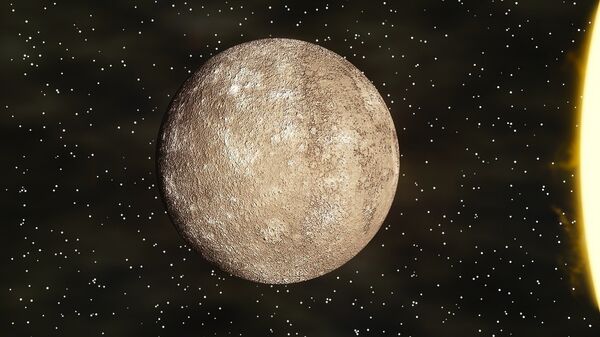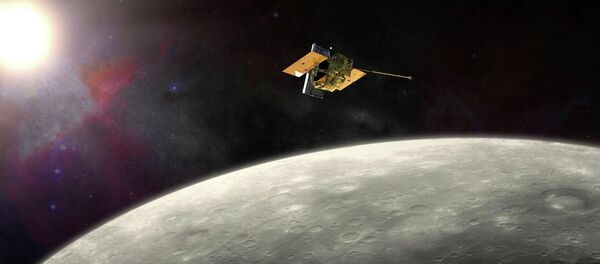As their paper in Geophysical Research Letters reveals, scientists from Brown University found three craters on Mercury that showed evidence of ice hidden away on their floors. According to researchers, the total area of the new ice sheets are roughly about 1,313 square miles — slightly larger than the size of Rhode Island.
Due to the planet's lack of tilt, its poles don't get much lovin' from the sun; in fact, they're left to endure bone chilling —290 degree temperatures. And since Mercury has little atmosphere, it isn't able to hold onto warmth from the surfaces that are baked by our star. This creates a perfect environment for ice to form.
The theory of ice on the distant planet first came into play in the 1990s as an explanation for some highly reflective regions picked up by Earth-based radar telescopes. It later got an extra boost after NASA's Messenger probe, which entered Mercury's orbit in 2011 and detected neutron signals from the planet's north pole that was consistent with water ice.
From the Messenger's data, the Brown University scientists discovered the new ice pockets.
In addition to the three large ice sheets the scientists detected, they also found four other reflective surfaces — hinting at more ice deposits.
"These four were just the ones we could resolve with the Messenger [data]," Ariel Deutsch, the study's lead researcher, said in a statement. "We think there are probably many, many more of these, ranging in sizes from a kilometer down to a few centimeters."
And yet, while the study sparks more questions, Jim Head, co-author of the paper, says the research does offer up a new perspective in planetary science.
"One of the major things we want to understand is how water and other volatiles are distributed through the inner solar system — including Earth, the moon and our planetary neighbors," Head said in a statement. "This study opens our eyes to new places to look for evidence of water, and suggests there's a whole lot more of it on Mercury than we thought."



